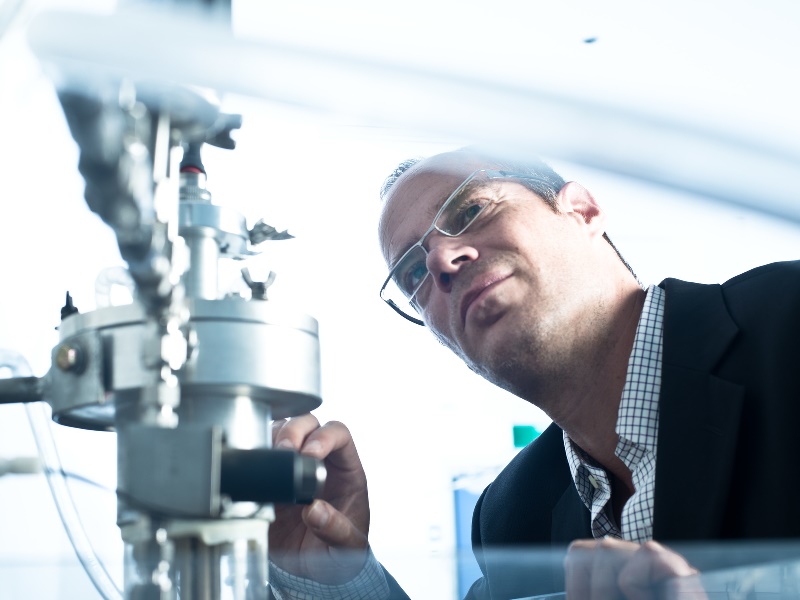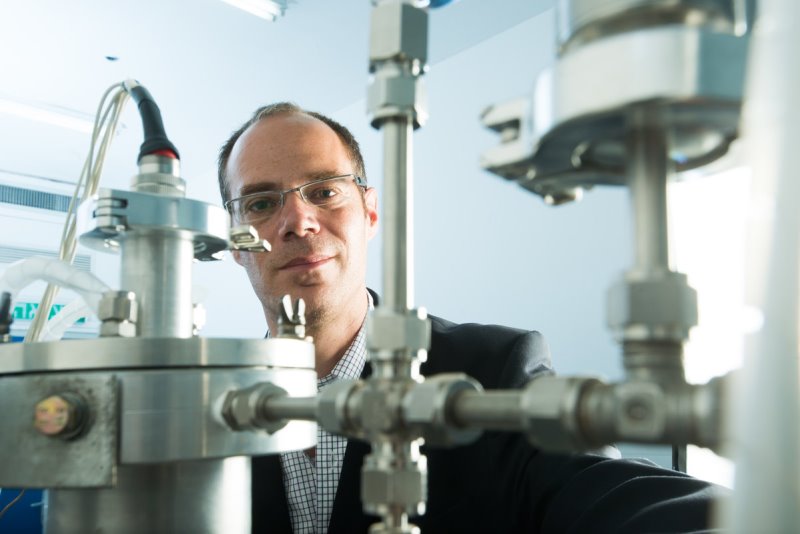"If we can take the wasted heat energy generated by fossil fuels
and recycle it into useful electricity to operate a car with more fuel efficiency,
we can reduce global warming"
Dr. Yaniv Gelbstein
What do cars, ships, trains and even tanks have in common? They all burn fossil fuels, pollute the atmosphere and contribute to global warming. The race to find alternatives and develop means for sustaining renewable energy has been going on for decades.
Dr. Yaniv Gelbstein, a member of the Department of Materials Engineering and the Ilse Katz Institute for Nanoscale Science and Technology, believes the solution lies in the application of thermoelectrics, the field that deals with the interaction between heat and electricity.
Gelbstein heads the Laboratory of Thermoelectrics and the Discipline of Electronic Materials, part of the Department of Materials Engineering, which has earned a reputation as one of the most important national centers of materials education and research in Israel. Many of the Department’s research projects, carried out in collaboration with Israeli industries, are aimed at developing new technological processes and methods for the production of materials used in novel approaches to generating energy.

Space exploration was one of the major developments that launched the practical use of thermoelectric generators. Solar panels aren’t much use in deep space, where sunlight is unavailable. Beginning in the 1960s, both the American and Soviet space agencies developed thermoelectric systems to generate sufficient electricity to power their space crafts’ giant systems. They developed new semiconductors constructed of totally different materials, which could efficiently convert heat from radioactive materials. These thermoelectric generators proved highly reliable and required far less maintenance.
Today thermoelectrics has two main applications: using heat to generate electricity, and utilizing the generated electricity in cooling devices for cars and mobile refrigerators, as well as other light-weight cooling devices. Gelbstein’s team is carrying out research in renewable energy, finding more ways to generate useful electrical energy from heat waste. The practical applications here on Earth are diverse, the most obvious being cars.
“By connecting thermoelectric converters to the car’s motor you can reduce fuel consumption dramatically,” explains Gelbstein. “Cars are very high pollutants of the atmosphere. If we can take the wasted heat energy generated by fossil fuels and recycle it into useful electricity to operate a car with more fuel efficiency, we can reduce global warming. This could be a real solution, to depend less and less on fossil fuels.” (Automobile manufacturers like BMW and GM have already begun developing such converters, but have not yet achieved a breakthrough.)

The main focus of Gelbstein’s lab he says “is improving the efficiency of the thermoelectric converters by means of nanostructuring, that is, reducing the materials to a size between microscopic and molecular structures.
“Nanostructuring is a very promising approach in scientific fields, but it’s mainly useful in low temperature applications,” he explains. “Under high temperatures the materials tend to coarsen, or expand. So without an innovative process, you lose the advantages of the nanostructure.”
His group is trying to design such a process. “One approach we are developing is what we call ‘thermodynamic driven nanofeatures,’ which are considered much more stable than the mechanical approaches for nanostructures,” he says.
“We’ve been lucky to find several material systems which can function as semiconductors and still be efficient from the thermoelectric point of view,” he adds.
Gelbstein has one of the best equipped thermoelectric laboratories in the world and is involved in several international projects. His team’s success at generating high efficiency values together with practical considerations, like long-term stability, has attracted the attention of major private transport companies as well as academic partners in the EU.
His team is now suggesting that thermoelectric systems can also be applied successfully to marine vessels. “In cars, the temperature is regulated by water flowing through the motor, but the amount is limited. In large boats you have an unlimited amount of water that can be used to cool the engine. Since boats are always moving against the waves, meaning the engine is always operating under maximum temperature, it remains stable compared to cars,” Gelbstein explains.
And then there are trains. Together with the Vossloh manufacturers of locomotive engines that supply new trains to Israel, the team is working on the possibility of using thermoelectric generators to increase efficiency.
Two more possible applications are of particular interest to Israel’s Defense Ministry: tanks and satellites. Tanks are very heavy and have very inefficient diesel engines that must be constantly refueled. What’s more, under fire a tank is in a dangerous static position. “If we can invent some sort of hybrid device that is based on combining photovoltaic and thermoelectric systems, you can utilize more of the sun’s energy, making the engines much more efficient.” He points out that such an economical and efficient hybrid device could be used in orbiting satellites, which today are powered by photovoltaic systems alone.
In addition to his innovative laboratory research, Gelbstein has been cited for Excellence in Teaching.
He lives with his wife Michal, also a materials engineer, and their four young children in the community of Lehavim just outside of Beer-Sheva. He credits his years working in the field for helping him become part of the international thermoelectric community at an early stage of his academic career.
